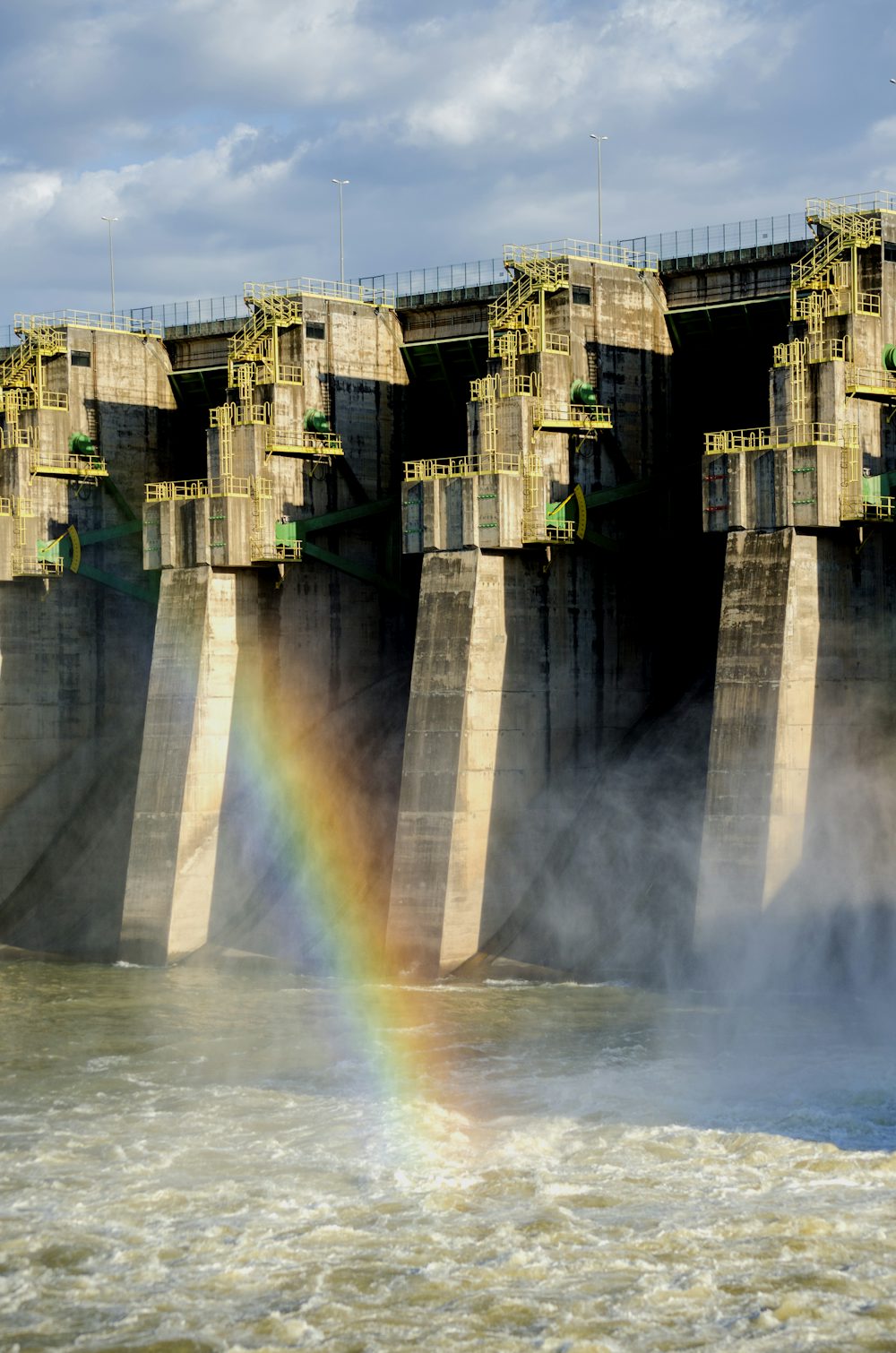In the heart of East Africa lies a nation brimming with natural beauty and untapped potential. Kenya, with its diverse landscapes ranging from lush forests to arid savannahs, has long sought innovative solutions to meet its growing energy demands sustainably. Amidst this quest for progress stands a towering symbol of ingenuity and power—the Seven Forks Dam
Nestled along the majestic Tana River, this hydroelectric marvel has become the backbone of Kenya’s energy infrastructure, illuminating homes, fueling industries, and propelling the nation towards a brighter future. This is the story of how the Seven Forks Dam emerged as a beacon of hope, transforming Kenya’s energy landscape and empowering its people.
A Vision of Progress.
The journey towards harnessing the Tana River’s potential began decades ago, as Kenya grappled with the need for reliable and sustainable energy sources. Recognizing the abundance of flowing water as a renewable resource, engineers and policymakers envisioned the construction of a monumental hydroelectric dam.
The Seven Forks Dam project was conceived not only to meet the nation’s current energy needs but also to pave the way for future growth and development. With unwavering determination, Kenya embarked on a quest to turn this vision into reality.
Engineering Marvels.
Constructing a hydroelectric dam of such magnitude presented formidable challenges, requiring innovative engineering solutions and meticulous planning. Teams of engineers and workers toiled tirelessly, overcoming rugged terrain and formidable obstacles to lay the foundations of the Seven Forks Dam.
The dam’s design incorporated state-of-the-art technology, including massive turbines and generators capable of converting the river’s kinetic energy into electricity on an unprecedented scale. As the structure began to take shape, it stood as a testament to human ingenuity and the power of collaboration.
Harnessing Nature’s Force.
With the completion of the dam’s construction, the mighty Tana River was harnessed to unleash a torrent of clean, renewable energy. Water cascaded through the dam’s turbines with remarkable force, generating electricity that would soon illuminate homes and power industries across Kenya.
The reservoir created by the dam not only served as a reservoir of energy but also as a source of irrigation, enhancing agricultural productivity and bolstering food security for communities downstream. Nature’s force was transformed into a beacon of progress, driving Kenya towards a brighter, more sustainable future.
Lighting up the Nation.
As the Seven Forks Dam roared to life, its impact reverberated far beyond its concrete walls. Electricity flowed into homes and businesses, bringing light to remote villages and urban centers alike. Schools now had the power to educate, hospitals the means to heal, and industries the energy to thrive.
Kenya’s economy surged as the reliable supply of electricity fueled innovation and entrepreneurship, attracting investment and creating jobs for its burgeoning population. The Seven Forks Dam emerged not only as a source of power but also as a catalyst for social and economic transformation.
A Legacy of Sustainability.
Beyond its immediate benefits, the Seven Forks Dam stands as a testament to Kenya’s commitment to sustainability and environmental stewardship. By harnessing the power of flowing water, the nation reduced its reliance on fossil fuels and mitigated the impacts of climate change.
The dam’s operation is governed by strict environmental regulations, ensuring the protection of wildlife habitats and the preservation of natural ecosystems along the Tana River. As Kenya continues to expand its renewable energy portfolio, the Seven Forks Dam remains a shining example of how progress can be achieved without compromising the planet’s future.
Key Achievements of the Seven Forks Dam:
Sustainable Energy Generation: The Seven Forks Dam has enabled Kenya to diversify its energy sources and reduce dependence on fossil fuels. By harnessing the power of the Tana River, the dam generates a significant portion of the country’s electricity, contributing to a more sustainable energy mix.
Electricity Access: One of the primary achievements of the dam is its role in expanding access to electricity across Kenya. The reliable supply of electricity from the dam has brought light to homes, schools, hospitals, and businesses in both urban centers and remote rural areas, improving living standards and enhancing quality of life.
Economic Growth and Development: The availability of electricity from the Seven Forks Dam has fueled economic growth and development in Kenya. Industries now have access to a consistent and affordable source of energy, stimulating productivity, driving innovation, and attracting investment. The dam has created job opportunities and contributed to poverty alleviation by supporting the growth of small and medium-sized enterprises.
Infrastructure Development: The construction of the Seven Forks Dam required significant infrastructure development, including roads, bridges, and transmission lines. These infrastructure projects have not only facilitated the construction and operation of the dam but have also improved connectivity and accessibility in the surrounding areas, fostering regional development and integration.
Water Management: In addition to generating electricity, the dam plays a crucial role in water management and irrigation. The reservoir created by the dam provides a reliable source of water for agricultural irrigation, enhancing crop yields and food security for communities downstream.
Benefits to Kenya:
Energy Security: The Seven Forks Dam has significantly enhanced Kenya’s energy security by providing a reliable and consistent source of electricity. This reduces the country’s vulnerability to fluctuations in global oil prices and disruptions in fossil fuel supply chains, ensuring a more stable energy future for Kenya.
Environmental Sustainability: As a renewable energy source, hydroelectric power generated by the dam contributes to Kenya’s efforts to mitigate climate change and reduce greenhouse gas emissions. By avoiding the burning of fossil fuels, the dam helps preserve air quality and reduce the country’s carbon footprint, promoting environmental sustainability and mitigating the impacts of climate change.
Social Development: Access to electricity from the Seven Forks Dam has had profound social development impacts, particularly in rural areas. Improved lighting in homes and streets enhances safety and security, while electrified schools and health facilities enable better education and healthcare delivery. Electricity also facilitates access to information and communication technologies, empowering communities and bridging the digital divide.
Regional Integration: The Seven Forks Dam serves as a cornerstone of regional energy cooperation and integration in East Africa. Through cross-border transmission lines and power-sharing agreements, Kenya exports surplus electricity to neighboring countries, fostering economic collaboration and promoting regional stability.
Tourism and Recreation: The reservoir created by the dam has the potential to support tourism and recreational activities, further contributing to Kenya’s economy. Visitors can enjoy boating, fishing, and wildlife viewing in the scenic surroundings of the dam, creating opportunities for eco-tourism and sustainable development.
In summary, the Seven Forks Dam represents a transformative achievement for Kenya, providing sustainable energy, driving economic growth, and improving the lives of its citizens. Through careful planning and investment, Kenya has harnessed the power of its natural resources to build a brighter, more prosperous future for generations to come.
Conclusion:In the annals of Kenya’s history, the Seven Forks Dam occupies a place of pride and distinction—a symbol of innovation, resilience, and progress. From its humble beginnings as a vision of possibility to its realization as a powerhouse of energy, the dam has transformed the nation’s trajectory, illuminating a path towards prosperity and sustainability.
As Kenya looks towards the horizon, the Seven Forks Dam serves as a reminder of the boundless potential that lies within its borders and the enduring legacy of harnessing nature’s forces for the greater good.



